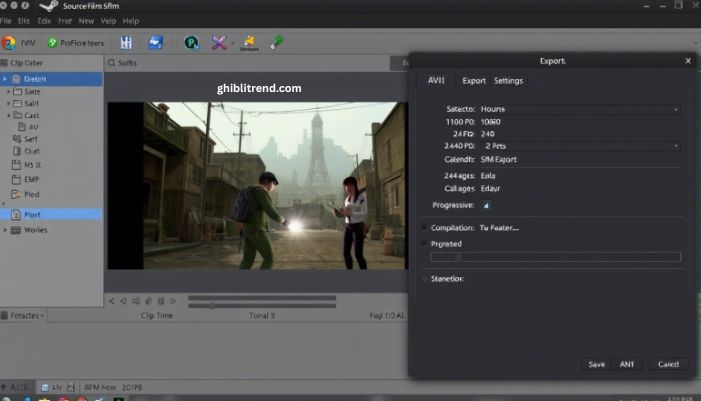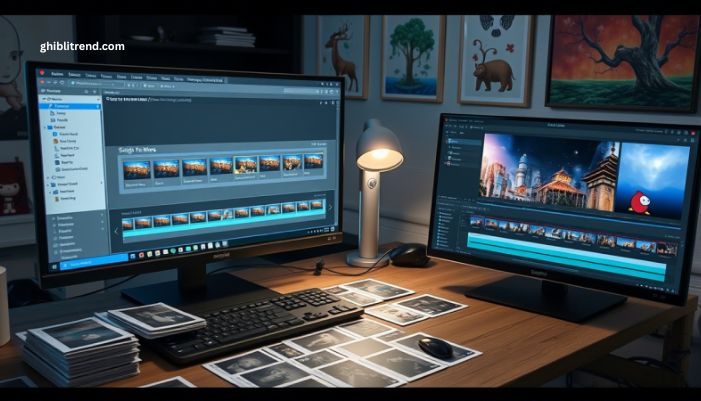SFM Compile: Simple Steps for Great Results in 2025
Have you made a cool animation in Source Filmmaker (SFM)? Want to turn it into a video you can share? That’s where SFM compile comes in.
Compiling sounds hard, but it’s not. It just means saving your project as a video file. That way, you can upload it, share it with friends, or use it in other apps.
In this guide, I’ll show you how to SFM compile the right way—step by step. Whether you’re new or just stuck, you’ll learn how to export your work without stress. Let’s make sure all your hard work turns into something you can show the world!
What Does SFM Compile Mean?
When you compile in SFM, you’re telling the program to create a video from your scene. It takes your work—the models, the lights, the sounds, and the camera shots—and turns it into a full movie file.
You can then watch it like a normal video or post it online.
But here’s the catch: it doesn’t always work smoothly. Sometimes, the video doesn’t look right. Sometimes, it crashes. And sometimes, the file is just blank.
That’s why it helps to learn how to do it the right way from the start.
Steps to Compile in SFM

1. Finish Your Scene
Before you do anything else, go over your animation:
- Are all shots complete?
- Are the lights and sounds placed well?
- Does your camera follow the action?
Take a last look. It’s easier to fix things now than after compiling.
2. Open the Clip Editor
SFM has different parts. The Clip Editor is where you set up your full scene. Go there first.
- Choose your main shot.
- Make sure the camera is correct.
- Check the time bar to match the start and end of your clip.
This is what will get exported.
3. Pick Export Settings
Now go to the top menu and click:
File > Export > Movie
You’ll see a new window. This is where you choose how to export your scene.
Pick these settings:
- Format: AVI for fast video. PNG or TGA if you want better quality.
- Resolution: 720p or 1080p is best for most uses.
- Frame Rate: Use 24 or 30 frames per second.
- Render Settings: “Progressive” gives good quality and speed.
Also choose where to save your file. Pick a folder you can find easily.
4. Start the Compile
Click Export and let SFM do the rest.
This part may take a while. It depends on:
- How long your video is.
- How many models and lights you use.
- The size and quality settings.
Be patient. Close other apps to help SFM go faster.
Read: Studio Ghibli Art Style Characteristics: A Magical Visual Journey in 2025
Common Problems and Easy Fixes
Problem: SFM Crashes While Compiling
Fixes:
- Try to export shorter scenes.
- Lower your resolution.
- Make sure you have free RAM and disk space.
SFM can crash if there’s too much to process at once.
Problem: Video is Black
This happens when the camera isn’t set right.
Fix:
- Check that you’re using the right camera in the shot.
- Go to the timeline and double-click the camera.
Now try to compile again.
Problem: The Render Looks Bad
Fix:
- Use PNG or TGA files instead of AVI. Then join them in a video app.
- Turn on anti-aliasing and motion blur for better results.
- Make sure your lighting isn’t too dark or bright.
Tips to Make Your Compiles Look Great

Use Image Sequences
AVI is fast, but it can blur your image or lose sound. PNG and TGA give you clean, clear frames. You can join them in video software later.
Keep It Short
Long scenes take a long time to compile. They also crash more.
Try this:
- Export short clips.
- Edit them together later using a video editor.
This saves time and helps avoid errors.
Save Often
SFM can freeze. It can crash. That’s just how it is. Always save your work, even during small changes. That way, you don’t lose hours of work.
What Each Export Option Means
Format
- AVI: Fast and simple. But not the best for quality.
- PNG or TGA: Slower, but great for clean images and future edits.
Render Quality
- Progressive: Good balance.
- High Quality: Sharp, but slow.
- Draft: Low quality. Use only for quick previews.
Other Settings
- Motion Blur: Makes movement look smooth.
- Depth of Field: Adds focus blur. Good for realism.
Use these if you want your video to look more like a movie.
Why SFM Compile Feels Slow
SFM is old software. It wasn’t made for huge, high-detail scenes.
Here’s why it gets slow:
- You used a lot of lights or models.
- You set high quality or resolution.
- Your computer needs more memory.
What to do:
- Lower your settings for test runs.
- Compile one part at a time.
- Clear space on your hard drive.
Final Thoughts
Compiling might sound tricky. But once you’ve done it a few times, it feels easy.
Now you know how to:
- Set up your scene.
- Pick the best export settings.
- Fix problems like crashes or black screens.
- Make your video look its best.
The SFM compile step is the last piece of the puzzle. And once you get it right, you’ll have a finished video to show off to the world.